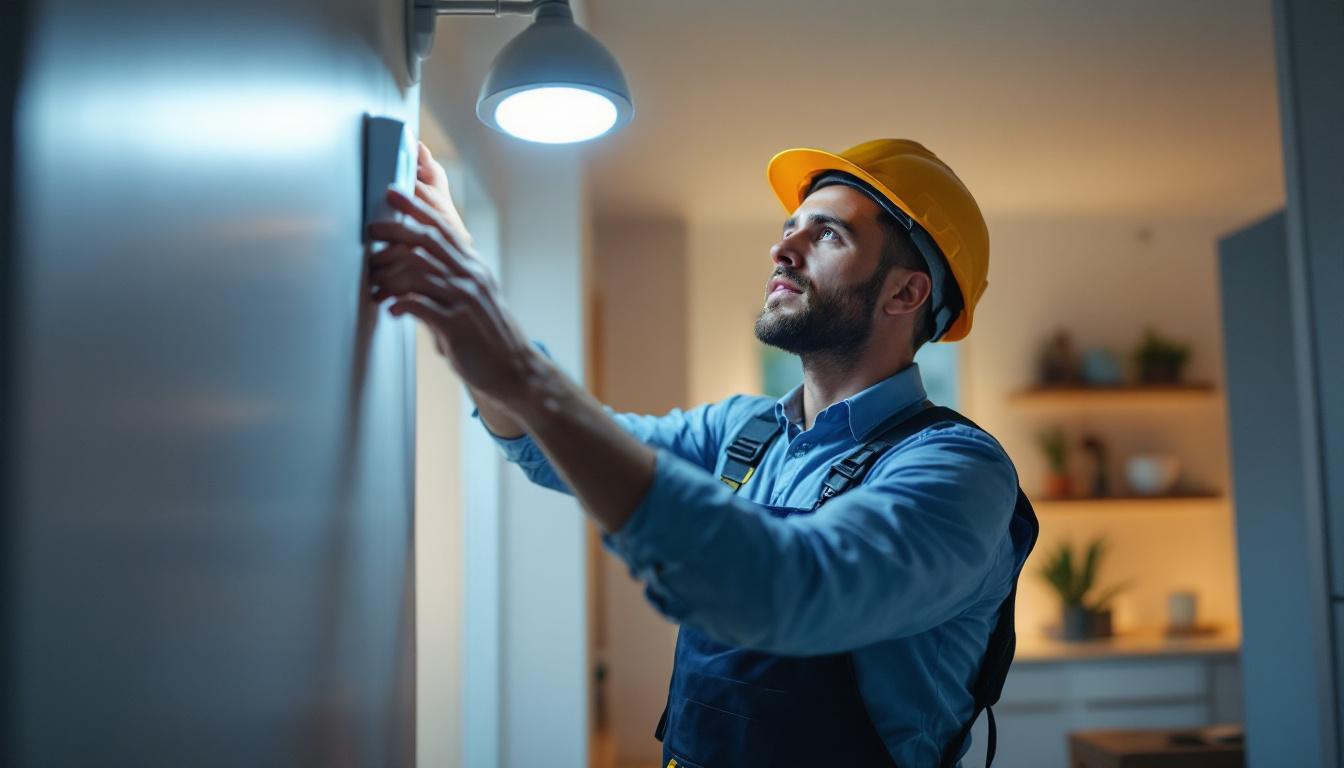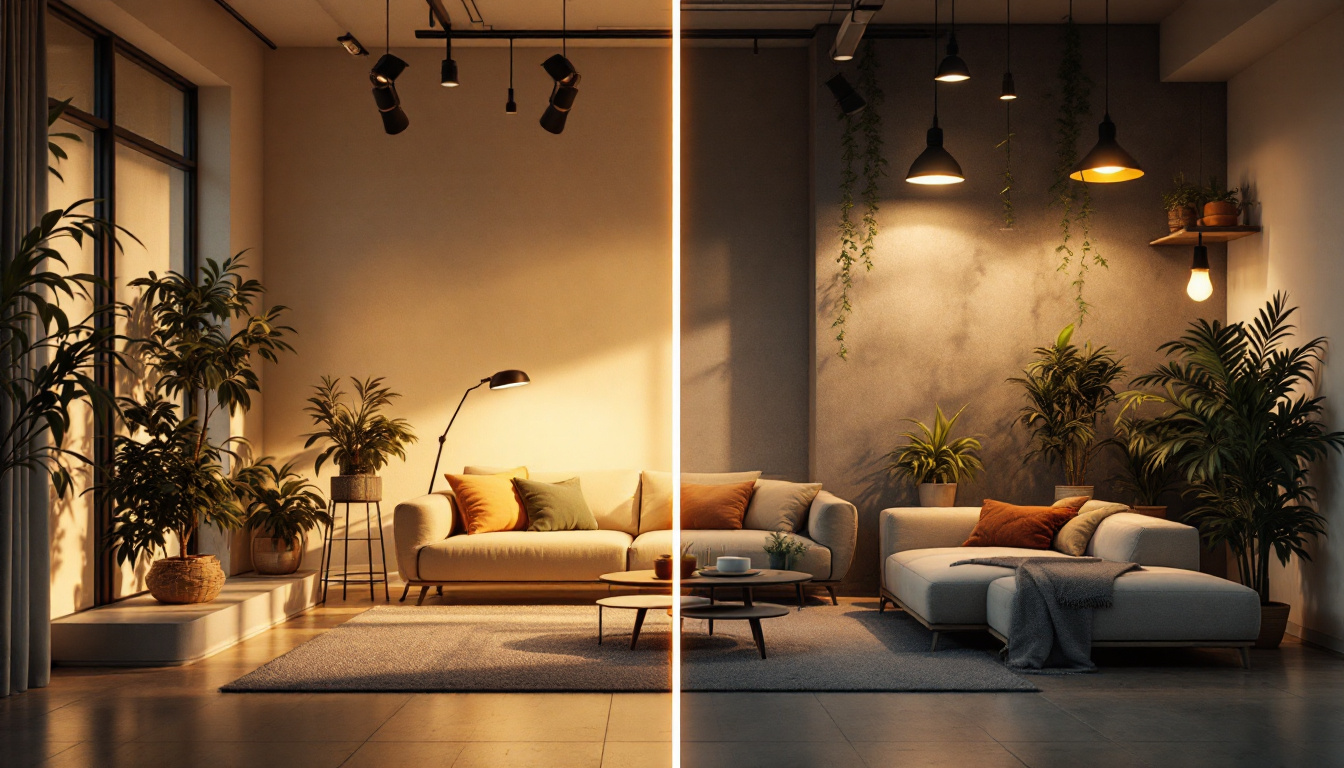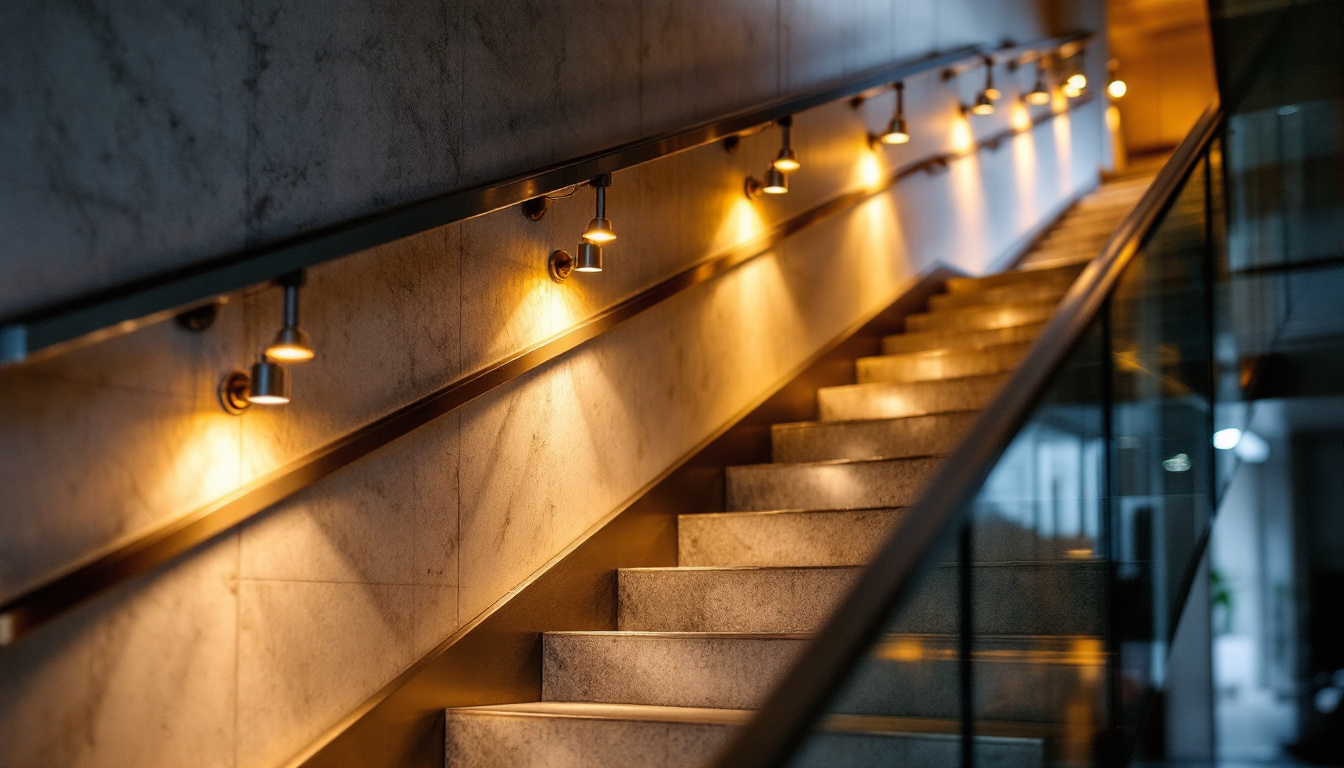
In the ever-evolving world of lighting solutions, motion sensor indoor lights have emerged as a game-changer for lighting contractors. These innovative devices not only enhance the convenience of indoor spaces but also significantly improve energy efficiency. By automatically turning on and off based on occupancy, motion sensor lights provide a seamless blend of functionality and sustainability.
For lighting contractors, understanding the benefits and applications of motion sensor indoor lights is essential. This article delves into how these devices can streamline operations, reduce costs, and elevate the overall quality of lighting installations.
One of the most compelling advantages of motion sensor indoor lighting is its ability to adapt to various environments. Whether in residential homes, commercial offices, or public spaces, these lights can be tailored to meet the specific needs of each setting. For instance, in a busy office environment, motion sensors can ensure that lights are only activated when employees are present, thereby conserving energy during off-peak hours. Similarly, in a retail space, strategically placed sensors can create an inviting atmosphere by illuminating areas as customers approach, enhancing their shopping experience while minimizing wasted energy.
Moreover, the integration of smart technology with motion sensor lighting systems is paving the way for even greater advancements. Many modern systems can be connected to smart home networks, allowing for remote control and monitoring through mobile apps. This feature not only provides convenience but also enables users to analyze usage patterns, further optimizing energy consumption. As the demand for smart home solutions continues to rise, lighting contractors who are well-versed in these technologies will be better positioned to meet client expectations and stay ahead of the competition.
Motion sensor technology has advanced considerably over the years, leading to more reliable and efficient lighting solutions. At its core, motion sensors detect movement within a designated area and trigger the lighting system accordingly. This technology can be categorized into several types, each with its unique advantages.
There are primarily two types of motion sensors used in indoor lighting: passive infrared (PIR) sensors and ultrasonic sensors. PIR sensors detect changes in infrared radiation, which is emitted by moving objects, typically people. They are ideal for spaces where occupancy is sporadic, such as hallways or restrooms.
On the other hand, ultrasonic sensors emit high-frequency sound waves and measure the reflection of these waves. They are more sensitive than PIR sensors and can detect motion even in complex environments, making them suitable for larger rooms or areas with obstacles. For instance, in a warehouse setting, ultrasonic sensors can effectively monitor movement around stacks of goods, ensuring that lights are activated only when necessary, thus enhancing operational efficiency.
The integration of motion sensors in indoor lighting systems offers numerous benefits. First and foremost, they significantly reduce energy consumption. By ensuring that lights are only on when needed, contractors can help clients lower their electricity bills and minimize their carbon footprint.
Additionally, motion sensors enhance safety and security in indoor environments. Well-lit spaces deter potential intruders and provide a sense of safety for occupants. This is particularly important in commercial settings, where employee and customer safety is paramount. Furthermore, the use of motion sensors can also contribute to a more comfortable atmosphere; for example, in a retail store, lights that automatically adjust based on foot traffic can create a welcoming environment that encourages customers to browse longer.
Moreover, the implementation of motion sensor technology can lead to significant maintenance savings. Traditional lighting systems often require regular bulb replacements and upkeep, but with motion sensors, lights are only activated when necessary, extending the lifespan of the bulbs. This not only reduces the frequency of replacements but also minimizes the labor costs associated with maintenance. In addition, many modern motion sensors come equipped with smart technology, allowing for remote monitoring and control, which can further streamline operations and enhance user convenience.
For lighting contractors, the adoption of motion sensor indoor lights translates into tangible efficiency gains. These benefits extend beyond just energy savings; they also encompass operational efficiencies and enhanced client satisfaction.
Installing motion sensor lights can simplify the overall installation process. Many modern motion sensor fixtures come with integrated sensors, reducing the need for additional wiring and components. This can lead to quicker installations and reduced labor costs.
Moreover, the versatility of motion sensor lights allows contractors to offer tailored solutions to clients. By assessing the specific needs of a space, contractors can recommend the most suitable type of sensor, ensuring optimal performance and satisfaction. For instance, in high-traffic areas such as hallways or restrooms, contractors might suggest fixtures with a wider detection range, while in more controlled environments, such as offices or conference rooms, options with adjustable sensitivity settings could be ideal. This level of customization not only enhances the functionality of the lighting but also showcases the contractor’s commitment to meeting client needs.
Providing clients with energy-efficient solutions fosters stronger relationships. When contractors introduce motion sensor lighting, they not only address immediate lighting needs but also contribute to long-term savings and sustainability goals. Clients appreciate the proactive approach, which can lead to repeat business and referrals.
Furthermore, educating clients on the benefits of motion sensor technology can empower them to make informed decisions. A knowledgeable contractor who can explain the advantages and functionalities of these systems will instill confidence and trust in their expertise. This educational aspect can be enhanced by offering demonstrations or providing informative materials that outline the energy savings, reduced maintenance costs, and improved safety features associated with motion sensor lights. By positioning themselves as trusted advisors, contractors can build lasting partnerships that extend well beyond a single project, ultimately leading to a robust and loyal client base.
The versatility of motion sensor indoor lights makes them suitable for a wide range of applications. From residential settings to commercial spaces, the potential uses are extensive and varied.
In residential settings, motion sensor lights can be particularly beneficial in areas such as hallways, bathrooms, and garages. Homeowners appreciate the convenience of lights that activate automatically, eliminating the need to fumble for switches in the dark.
Additionally, outdoor motion sensor lights can enhance security around the home, providing illumination when movement is detected. This not only deters potential intruders but also offers peace of mind for homeowners.
In commercial environments, motion sensor indoor lights can significantly improve energy efficiency. Offices, conference rooms, and restrooms are ideal candidates for this technology. For instance, lights can automatically turn off in unoccupied conference rooms, reducing unnecessary energy consumption.
Moreover, retail spaces can benefit from motion sensors by creating a welcoming atmosphere. Lights that respond to customer movement can enhance the shopping experience while also conserving energy during off-peak hours.
While the advantages of motion sensor indoor lights are compelling, lighting contractors must also be aware of potential challenges and considerations when integrating this technology into their projects.
One of the primary challenges with motion sensor lights is ensuring proper placement and calibration. Incorrectly positioned sensors may lead to false triggers or failure to activate when needed. Contractors must carefully assess the layout of a space to determine the optimal locations for sensors.
Additionally, some sensors may require calibration to ensure they respond appropriately to movement. This may involve adjusting sensitivity settings or defining the detection range, which can vary based on the specific needs of the environment.
Educating clients about the functionality and limitations of motion sensor lights is crucial. Some clients may have unrealistic expectations regarding the technology’s performance. For example, they may expect lights to activate in every situation, regardless of obstacles or environmental factors.
By providing clear information about how motion sensors work and their ideal applications, contractors can help clients set realistic expectations, leading to greater satisfaction with the installed systems.
The landscape of motion sensor indoor lighting is continually evolving, driven by advancements in technology and changing consumer preferences. Lighting contractors should stay informed about emerging trends to remain competitive in the market.
As smart home technology becomes increasingly popular, the integration of motion sensor lights with smart home systems is a growing trend. Homeowners are looking for cohesive solutions that allow them to control lighting through mobile apps or voice commands.
Contractors who are knowledgeable about smart home integration can offer clients a comprehensive lighting solution that enhances convenience and energy efficiency. This not only adds value to their services but also positions them as forward-thinking professionals in the industry.
With a growing emphasis on sustainability, energy efficiency standards and regulations are likely to become more stringent. Lighting contractors should stay updated on these changes to ensure compliance and provide clients with the most efficient solutions available.
By proactively adapting to these regulations, contractors can position themselves as leaders in energy-efficient lighting solutions, further enhancing their reputation and client trust.
Motion sensor indoor lights represent a significant advancement in lighting technology, offering numerous benefits for both contractors and clients. By enhancing energy efficiency, simplifying installation processes, and improving overall client satisfaction, these devices are transforming the way lighting contractors approach their projects.
As the demand for sustainable and efficient lighting solutions continues to grow, contractors who embrace motion sensor technology will be well-positioned to thrive in a competitive market. By staying informed about trends and educating clients on the advantages of motion sensor lights, contractors can enhance their service offerings and contribute to a more sustainable future.
Ready to elevate your lighting installations with the efficiency and innovation of motion sensor technology? At LumenWholesale, we offer an exceptional range of spec-grade motion sensor indoor lights that cater to the evolving needs of lighting contractors. Our commitment to quality and affordability ensures that you get the best value for your investment. Say goodbye to inflated markups and hello to hassle-free bulk buying with free shipping. Take the first step towards smarter, more sustainable lighting solutions and discover our wholesale lighting options today.

Discover the essential do’s and don’ts for lighting contractors when working with LED T5 lamps.

Discover essential tips and strategies to prevent expensive errors in your lighting projects with Eiko Lighting.

Explore the pros and cons of metal stairs lighting versus alternative options in this insightful guide for lighting contractors.

Discover essential tips and expert advice in “Strip Lights LED: Avoiding Pitfalls, A Lighting Contractor’s Guide.” Learn how to select, install, and maintain LED strip lights effectively while sidestepping common mistakes to ensure optimal performance and longevity.